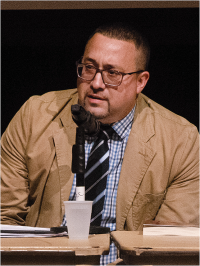February 22, 2024

The year 2024 marks fifty years since a federal court order was issued by US Judge W. Arthur Garrity mandating school desegregation in Boston which resulted in busing. While that decision sent shockwaves through Boston and riveted the country with images of yellow school buses rolling up the hills of South Boston –being met by angry residents shouting racial epitaphs and throwing rocks – what often gets lost in the telling of the story is the years of effective and creative organizing on the part of Black Bostonians who were driven by the simple desire to give their children a shot at a quality education in the Boston Public schools, and consequently, a shot at a better life.
I wrote “Before Busing” because it seemed to me that many Bostonians simply suffer from an incomplete story. Perhaps what was needed was a new narrative about busing. So, here’s my version.
In 1972, fourteen African American parents and forty-four children in Boston found the courage to file a lawsuit – with the help of the National Association for the Advancement of Colored People (NAACP) – against the City of Boston in federal district court contesting school segregation. Enlisting the help of attorneys from the Harvard University Center for Law and Education (including a young Tom Atkins, who was a student at Harvard Law School at the time), they sued the city’s school committee, arguing that Boston was maintaining two separate school systems. The civil lawsuit, which resulted in a victory for the plaintiffs in federal court in June of 1974, necessitated a remedy by law. The remedy would be the use of school buses to desegregate the Boston Public Schools.
This is a much different narrative from the one that has dominated over the last fifty years. That this was a unilateral decision, which felt more like an edict to some, from a power-hungry federal judge who didn’t live in Boston and whose own children attended schools in Wellesley, is how many Bostonians remember the decision to implement busing. In this case, however, the source of pain and strife that appeared to come from “out of the blue” was actually initiated by a legitimately aggrieved group of parents and children who had been treated unjustly.
Like all Bostonians, these parents were entitled to a quality education for their children from its public school system – a constitutional right – something which they had been denied. The federal court was literally, as Tom Atkins called it, “the court of last resort.” In the case of an absolutely defiant and intransigent school committee, after almost nine years of protest – the founding of Freedom Schools, Black independent schools, Operation Exodus, METCO, and many other creative ways of gaining a better education for their beloved children – the somewhat reluctant plaintiffs agreed to file suit against the school committee.
The trial took two years to decide. It was called Morgan v. Hennigan, named for the lead plaintiff, Tallulah Morgan, and the president of the Boston School Committee at the time, James Hennigan, charging discrimination in school assignments; staffing; and allocation of resources, facilities, and transportation.
I have always had a problem with the word “anniversary” when applied to busing. After all, what’s the use of calling something an anniversary that no one really wants to celebrate?
But perhaps if people knew what brought about the court order in the first place, I reasoned – the years of organizing that led up to busing, the long Black freedom struggle and the many Black contributions that played a role in making Boston what it became – we might have a better understanding of it, and, therefore, be able to find healing from it.
One of the questions that needs to be asked is whether Boston is a better city for having undergone school desegregation. By lancing the boil of racism, has Boston thrived from dealing with its racial problems? Thrived financially? Socially? Morally? Come closer to living up to the way most Americans see Boston, as a “City Upon a Hill?” If that is the case, then why is so little known about the courageous men, women, and children who saw a better future for Boston, and set about to bring it to fruition? Why do so few people know about the lawsuit, and the struggle itself, which brought about a more racially equitable city? Today it is commonplace for African Americans to live in any neighborhood in Boston. That was not the case during the years of school desegregation. This is why I wrote “Before Busing.”
Busing in Boston is a big topic. It requires an understanding of law, education policy, the history of race in America, the history of White ethnicity in America, particularly Irish American history, and how whiteness is formed. Luckily for me, these are all things that are taught in African American Studies, in which I received a Ph.D from the University of Massachusetts at Amherst in 2008. I wanted to triangulate all these fields of knowledge to tell a more accurate story of what led up to busing. It took many years to acquire this information. Years of looking, learning, listening patiently – and a lot of transcribing. Reading, and most of all, a close study of African American History. It also requires some psychology. Trying to understand the foibles of being human, and our sometimes-quirky way of doing things. Because none of us are perfect, but we are trying. And so is Boston.
Zebulon V. Miletsky, Ph.D. is an associate professor in the Department of Africana Studies & History at Stony Brook University in New York.


